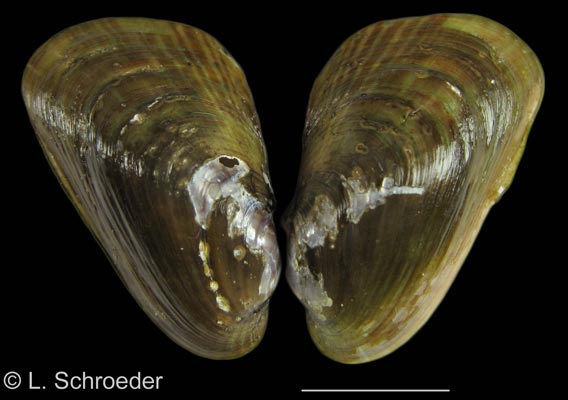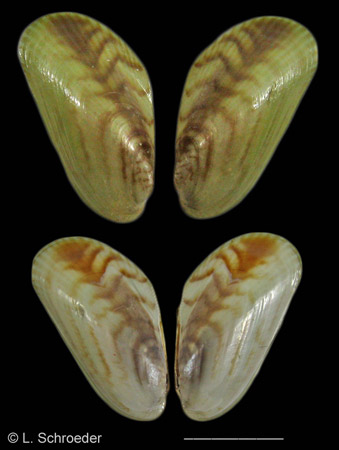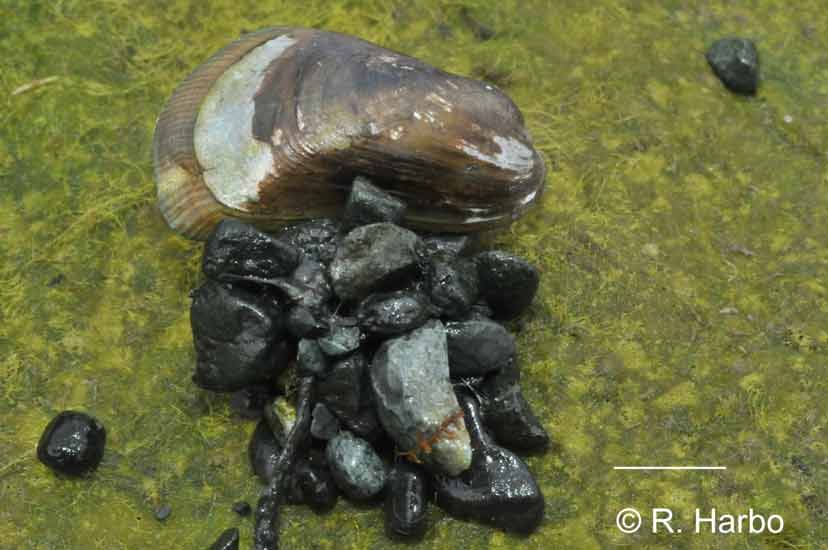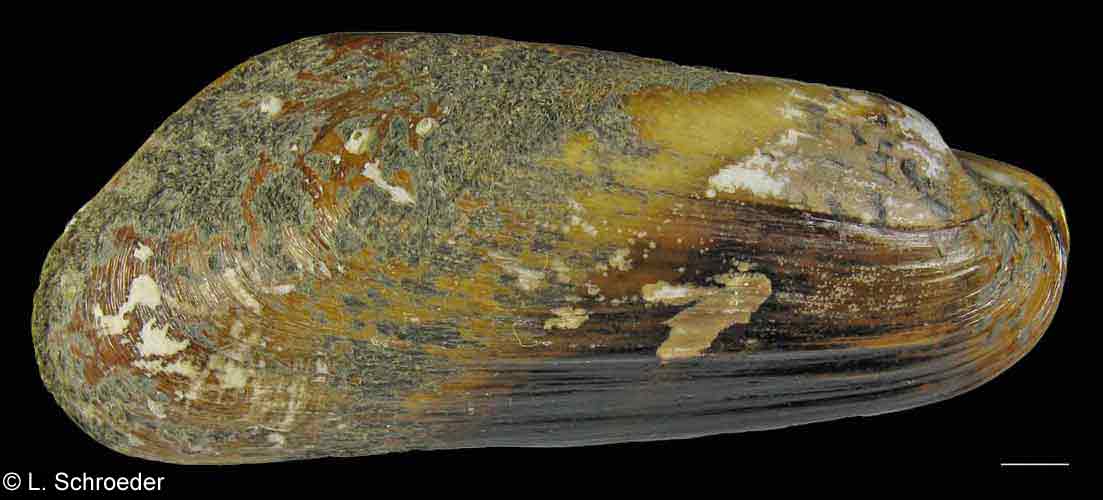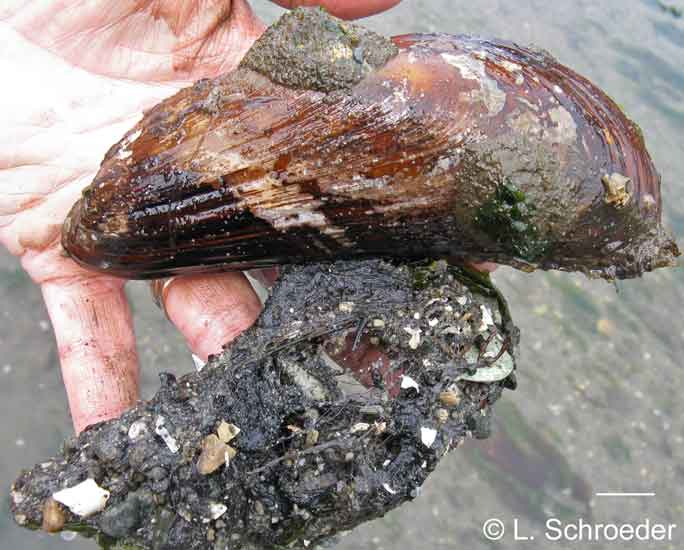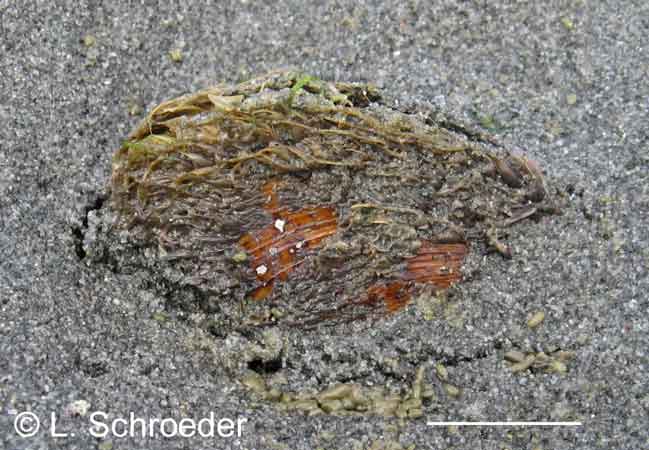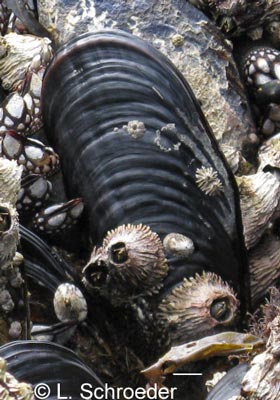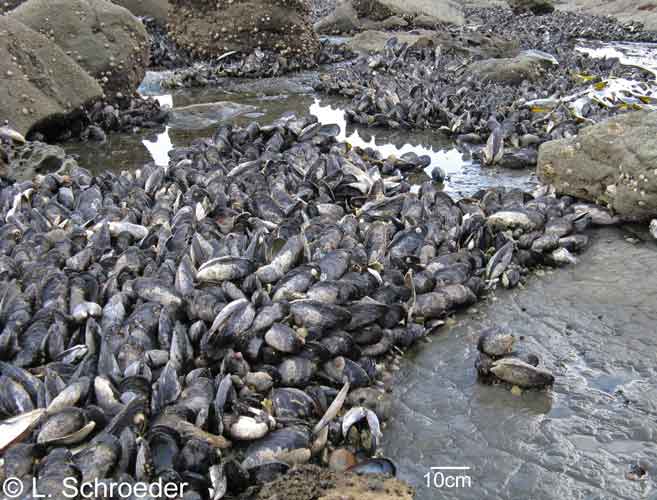The
"Blue Mussel" was once considered to be a single species. At
least three distinct species have been identified, all of which,
may be found in the Pacific Northwest - Mytilus trossulus, M. edulis and M. galloprovincialis. These smooth-shelled Blue Mussel
species
have been spread around the world, in part, the result of over 500
years of shipping activity. They have also been introduced
in
commercial ventures. In some locations the species readily
hybridize with each other. The full extent of the spread of each
species
and their hybridization is yet unknown. This further confuses a
group which is already virtually indistinguishable from each
other. All three species may be blue, black or brown in color. We refer to this group as the "Mytilus complex" on our lists where the
exact species cannot be determined. Mytilus trossulus is the species native to the Pacific Northwest and therefore predominates in
most places.
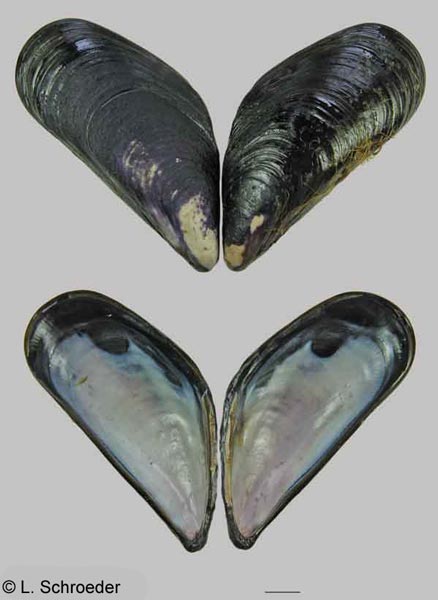 Douglas Island, AK
Douglas Island, AK
Mytilus trossulus
Gould, 1850Foolish Mussel * intertidal to 24m size to 90mm
central California to north Alaska,
across the Arctic to northern Europe
It is very common but cannot bereadily distinguished by shellalone from M. galloprovincialis.
Click on photo to enlarge. Scale line in photo equals 1cm unless otherwise specified.
* Species which are commonly encountered on the beach.
Bivalves
Family Mytilidae
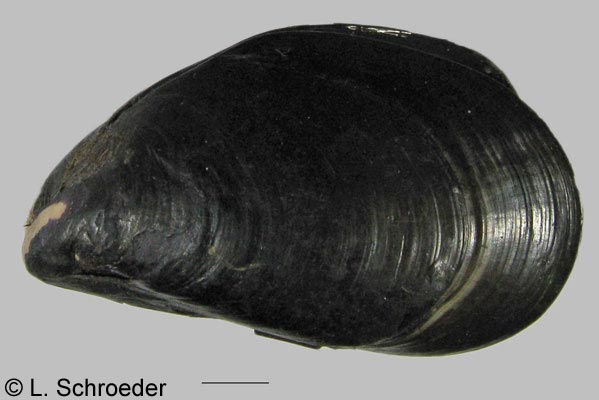 Massachusetts
Massachusetts
Mytilus edulis Linnaeus, 1758Blue Mussel intertidal to 50m size to 133mm
There is experimental mariculture of this
species in BC. It is uncertain if populations of M. edulis and M. edulis-hybrids
have been introduced to the wild or if they rely on spawnings from
repeated introductions of the mussel at aquaculture sites. It is present on
both sides of the Atlantic Ocean and on both
coasts of South America.
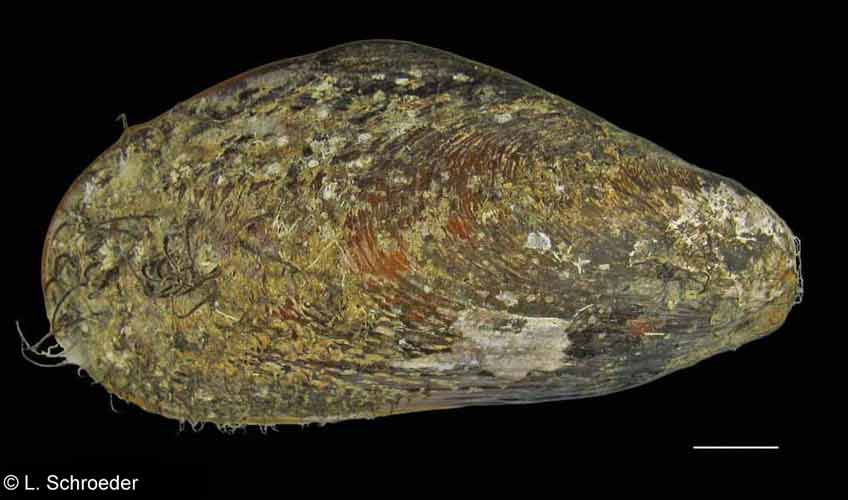
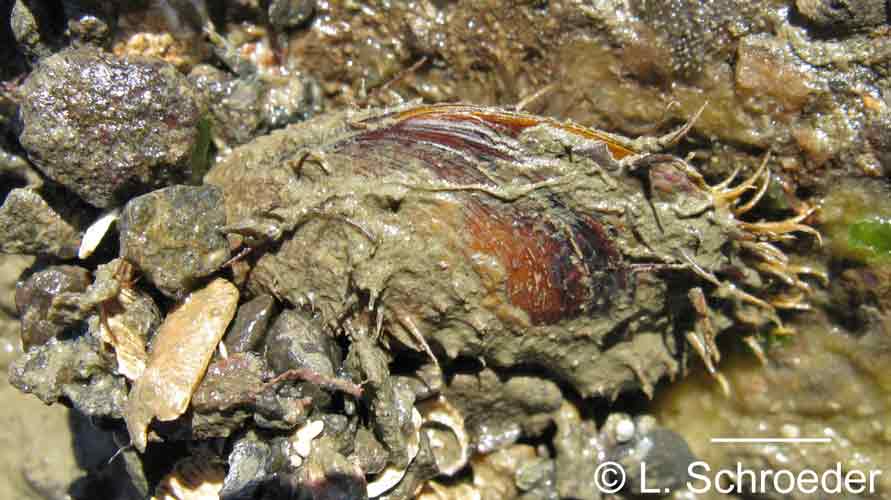
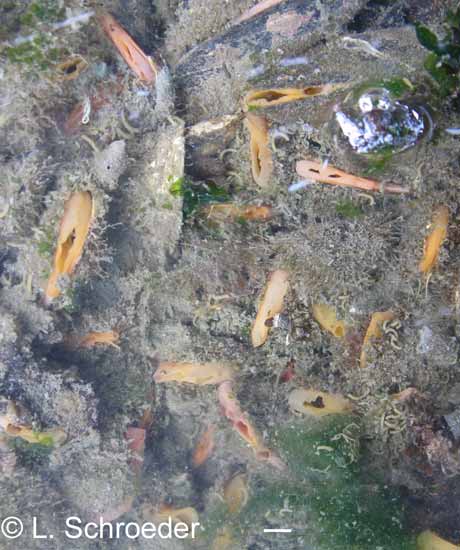
San Juan Islands, WA
Anacortes, WA, intertidal
Petersburg, AK, tide pool
Modiolus modiolus (Linnaeus, 1758)
Northern Horsemusselintertidal to 200m size to 23cmcircumpolar reaching south to southern California, Japan, New Jersey, and the MeditteraneanIt
is not commonly found intertidally in our area. It prefers a
gravel/sand substrate and tends to live in clusters. Look for the
orangish flesh, visible in submerged specimens. It often hosts pea crabs.
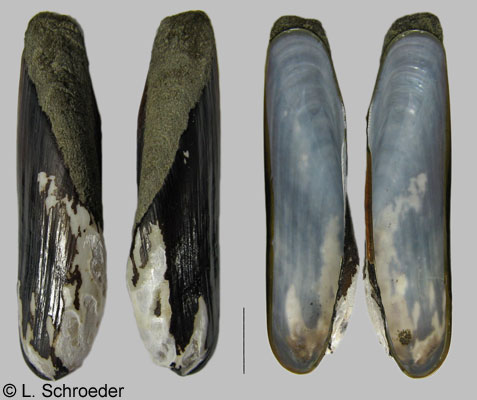
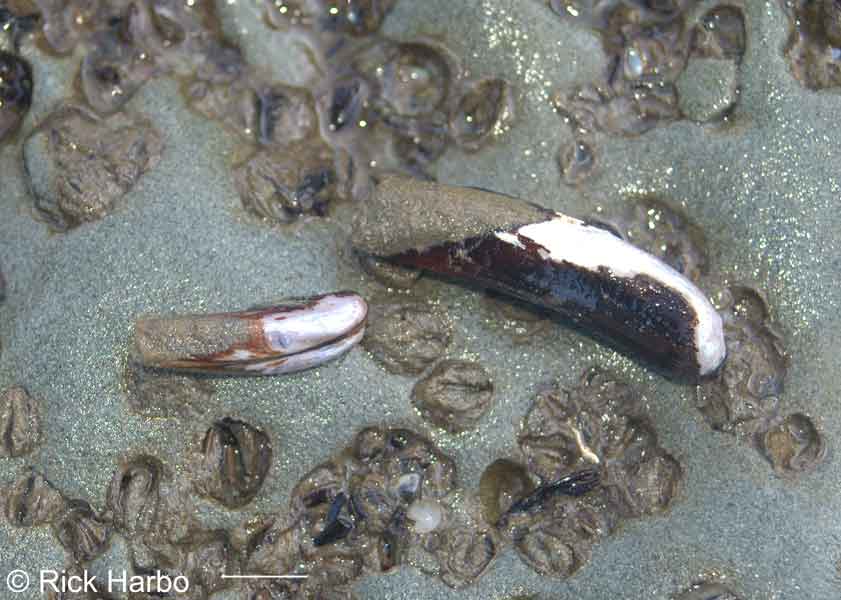
Whiskey Creek Beach, WA
Slip Point, WA, intertidal
Adula californiensis (Philippi, 1847)
California Datemussel
intertidal to 20m size to 60mm
southern California to Haida Gwaii, BC
It is not uncommon, but takes some effort to find. It bores into clay, shale and other soft rocks. It has a distinctive, narrow shape and is the only one like it in the Pacific Northwest.
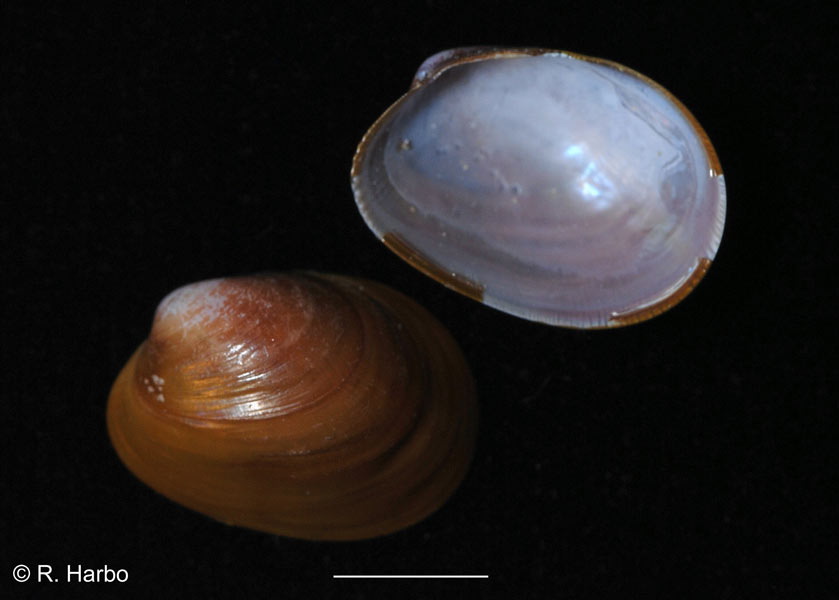 Kerouard Islands, Haida Gwaii, BC
Kerouard Islands, Haida Gwaii, BC
Vilasina vernicosa (Middendorff, 1849)Varnished Kelp Musselsubtidal, 3-80m size to 24mmHaida Gwaii to central AlaskaThis is common in the Aleutians and lives on tunicates, hydroids and kelp. It is most readily mistaken for M. discors. The shell is glossy and the interior is nacreous purple.(previous names - Modiolaria vernicosa, Musculus vernicosa)
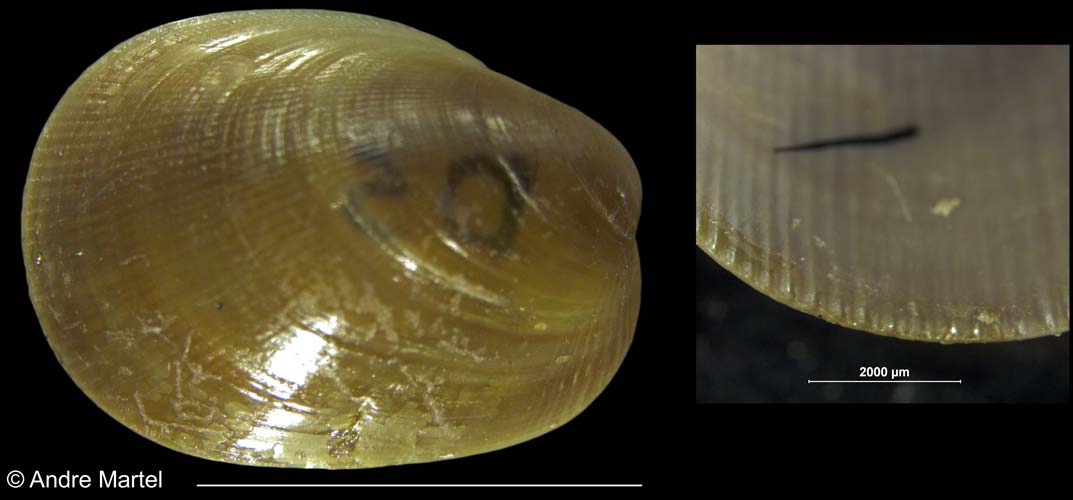 Cook Inlet, AK
Cook Inlet, AK
Vilasina seminuda (Dall, 1897)Partly Sculptured Crenella
subtidal, 10-300m size to 15mm
north Washington to south Bering Sea and west to Kuril Islands
This shell has a light brown to greenish periostracum. It is more inflated than V. vernicosa and has broader ribs. The interior margin has fine crenulations.
(previous names - Modiolaria seminuda, Crenella seminuda)
This page last revised: 5-25-2019
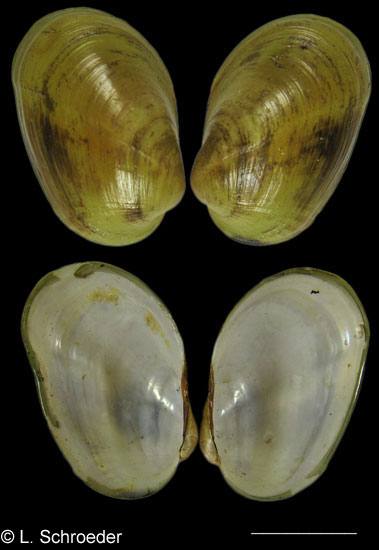
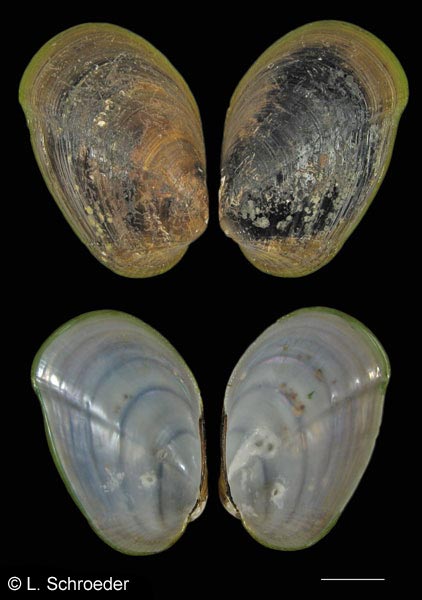
Kuiu Island, AK
Victoria,
BC
Musculus discors (Linnaeus, 1767)Discordant Musselintertidal to 150m size to 70mmPanarctic and circumboreal, reaching to central Washington, northern Japan, New York and the Mediterranean
It
is rarely found intertidally. The periostracum is olive-green to
dark brown. The shell shape and sculpture are variable.
There is a distinct fold separating the central and posterior
regions.
(synonyms - Musculus laevigata, Musculus substriata)
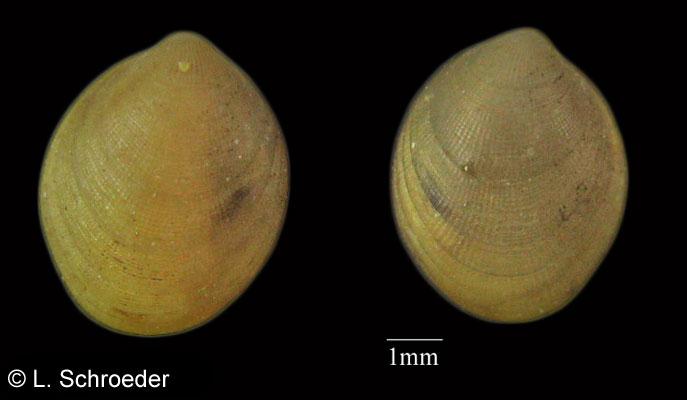 Ucluelet, BC
Ucluelet, BC
Solamen columbianum (Dall, 1897)British Columbia Crenellasubtidal, 18 to 530m size to 35mmsouthern California to central Alaska and west to Siberia and northern JapanThis shell is inflated and has very fine radial and irregular, commarginal lines.
(previous name - Crenella columbiana)
Modiolus rectus (Conrad, 1837)
Straight Horsemussel *
intertidal to 15m Peru to Haida Gwaii, BC size to 230mm
It can be found intertidally. It prefers sand and mud and specimens tend to be solitary. The shell is very elongate and the periostracum is thick and adherent. The distinct light and dark portions of the shell are typical.
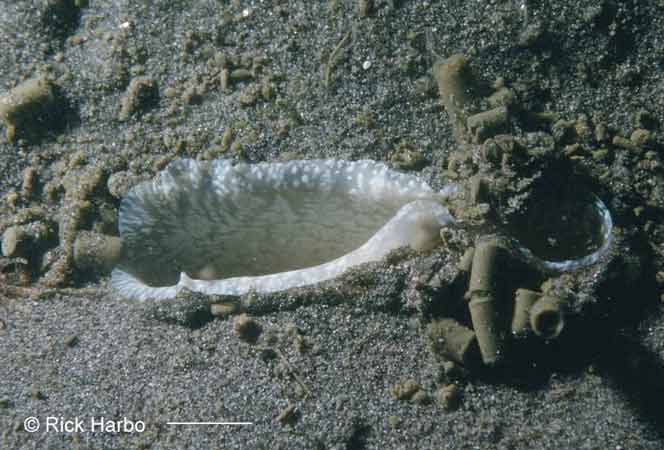 Clayoquot Sound, BC, subtidal
Clayoquot Sound, BC, subtidal
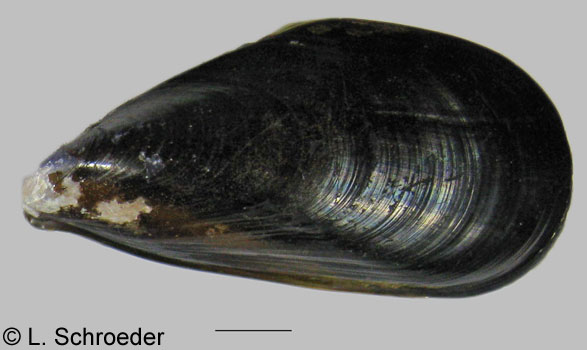 commercial shellfish farm, Totten Inlet, WA
commercial shellfish farm, Totten Inlet, WA
Mytilus galloprovincialis
Lamarck, 1819Mediterranean Musselintertidal to 24m size to 166mm
It cannot be readily distinguished by shell alone from M. trossulus. Originally introduced for aquaculture, it has now formed several wild populations in the Strait of Georgia, B.C. It has also formed hybrids with M. trossulus and M. edulis in this Strait. In central California it has formed hybrids with M. trossulus. It is native to Europe and has been introduced throughout the world.








